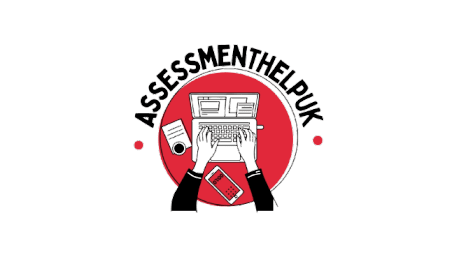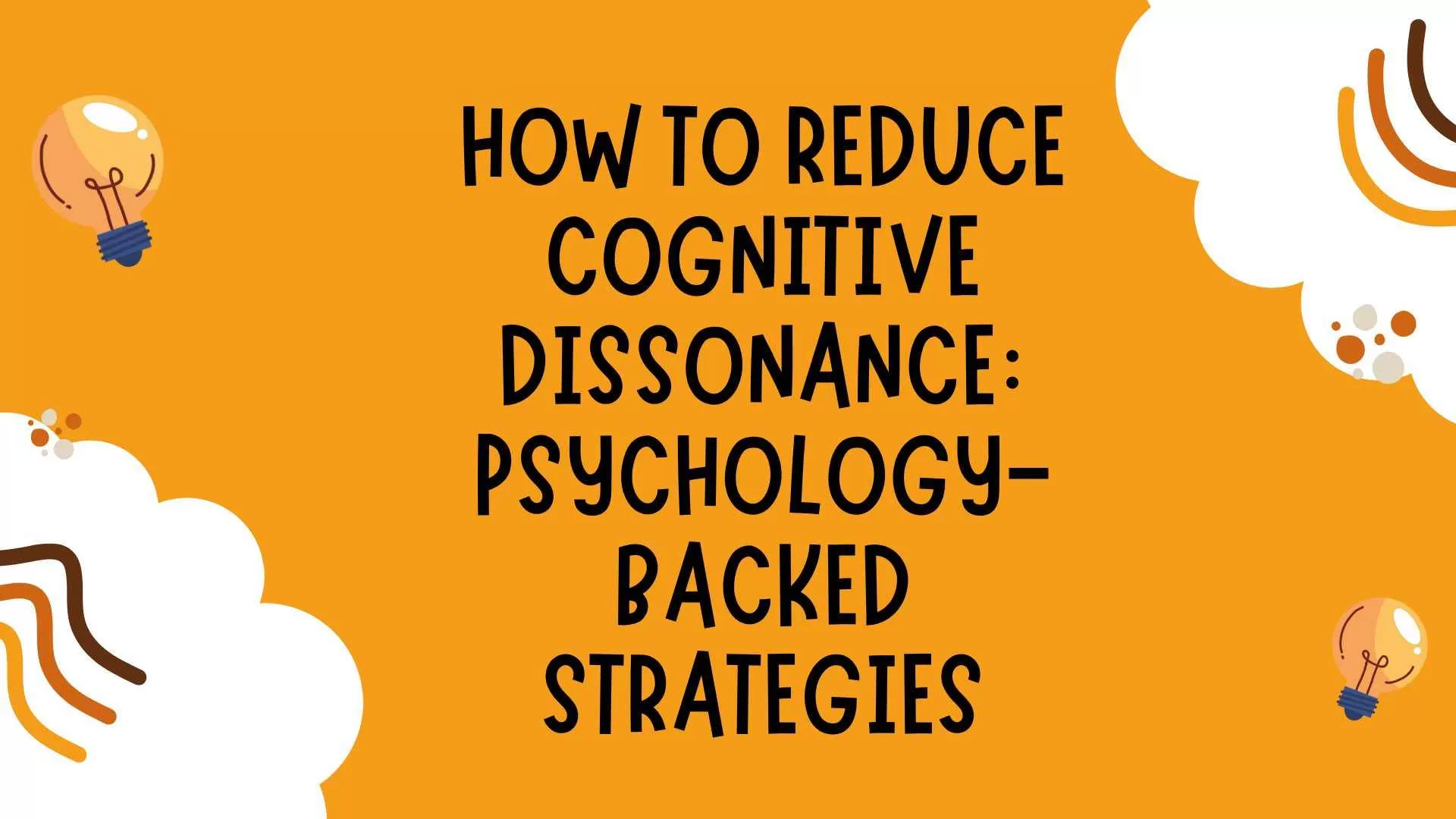Because peace of mind starts with inner alignment.
It is something everyone of us has been aware of, that discomfort that comes from a conflict of sorts, either regarding actions, thoughts, or beliefs, or all of those conflicts. That discomfort is not a weakness, but rather a form of cognitive dissonance, and it is a predictable, yet strong, form of psychology.
In previous discussions, what is cognitive dissonance? The psychology behind self versus self, we examined how a conflicting belief plays a role in the decision process.
Now, to take it to another level of understanding, we will go further into understanding how to resolve cognitive dissonance and use it as an agent of self-awareness, integrity, and enduring change, because reducing dissonance is not reducing discomfort; it is about reducing discomfort and streaming it into useful insight.
Understanding Why Dissonance Persists
Before proceeding, I will share with you that cognitive dissonance does not spontaneously disappear. The more emotionally invested we are in a belief or behaviour, the harder it may be to disengage from the contradiction. The mind will instinctively defend its comfort zone, often through continual denial, rationalisation, or selective thinking.
As one example, a person who genuinely values honesty, but sometimes stretches the truth, might say to themselves, “It’s honest enough.” This self-justification alleviates the immediate pressure but perpetuates dissonance. Understanding why dissonance can persist can help you locate the source of your discomfort, which is usually guilt, fear, pride, or adherence to a long-since disproven belief.
The Mind–Behaviour Alignment Principle
At the bottom of reducing cognitive dissonance is one strong concept: That’s alignment. When your values, beliefs, and behaviours are in sync, mental conflict subsides naturally. But when one of them is out of place, tension builds up.
Reducing dissonance means examining your internal belief system and asking:
- Do my actions reflect what I truly value?
- Am I living according to principles I still believe in, or ones I’ve outgrown?
This process does not always bring comfort, but it’s transformative. True psychological balance stems from the courage to align who you are with what you do, not how perfect it can be.
Identifying the Source of Your Dissonance
Journaling, self-reflection, or even talking through patterns with a mentor or therapist could help you bring a much clearer picture. Often, dissonance hides beneath small habits, such as overworking to prove worth, staying silent to avoid any tension, or supporting opinions that don’t feel right. Knowing these moments is the core foundation of change.
So, right before you can solve any cognitive dissonance, it’s important that you understand where it’s coming from; this step needs an honest self-observation, not judgment, but curiosity.
Be honest and ask yourself:
- When do I feel most conflicted between what I think and what I do?
- Do I make excuses for certain choices, and why?
- Which values do I defend the hardest, and what happens when they’re challenged?
Re-evaluating Core Beliefs
At times, dissonance rises because of what we like to imagine and believe, not because of what we do. With time, we inherit ideas from culture, family, religion, or even from the social circles that might no longer serve us. Yet, we hold onto them, fearing that letting them go means betraying who we actually are.
Reducing cognitive dissonance involves a gentle, but even the most powerful question:
“Does this belief still represent me?”
When you challenge outdated or rigid assumptions, you create a space for a much more authentic worldview. That shift doesn’t mean abandoning your identity; it means truly refining it. This is where emotional maturity embraces psychological growth.
Practising Cognitive Flexibility
Cognitive flexibility is the ability to adapt your thinking when faced with something new and profound; it’s the key to inner peace. It’s not about changing your mind for the sake of it, but about being liable and open to growth.
Here are some steps that you can take to develop it:
- Pause before defending your belief. Ask yourself if you’re reacting out of pride or perspective.
- Expose yourself to opposing viewpoints. Listen to understand, not to argue.
- Acknowledge uncertainty. It’s okay not to have all the answers; it keeps learning alive.
Bridging the Gap Between Belief and Behaviour
Once you know where the dissonance lies, the next step is to take action that restores harmony. This doesn’t mean rewriting your entire life once again; it means aligning small, consistent behaviours with your true values.
Small Actions, Lasting Alignment
Once your actions start to reflect your beliefs, mental conflict begins to dissolve naturally. It’s a slow process, but one that really benefits you with clarity, confidence, and emotional accountability. Even the smallest step towards congruence is the most powerful one.
Building Integrity Through Repetition
True alignment isn’t made in grand gestures but through repetition. Each and every moment you choose to act in accordance with your beliefs, you bind your internal balance and distort the pull of justification.
The Role of Self-Compassion in Reducing Dissonance
Most people struggle to reduce cognitive dissonance because they approach it with guilt. They see inconsistency as a failure, but dissonance isn’t a proof of hypocrisy; it’s the evidence of awareness. It means that your mind is mature enough to know when something doesn’t fit.
Reframing the Inner Critic
Self-compassion involves awareness without harsh self-criticism. When you first respond to a conflict with understanding instead of shame, your brain is more willing to change. This mindset shift makes it much easier to understand the real difficulties without ever feeling attacked by them, and the exact material environment that’s needed for a genuine change.
Emotional Regulation and Reflective Thinking
Cognitive dissonance brings emotional turbulence, guilt, confusion, and even defensiveness. Instead of resisting those feelings, you need to treat them as signals guiding you toward their inner realignment.
Learning to Sit With Discomfort
Emotional regulation tactics such as mindful breathing, grounding exercises, or even journaling don’t just calm the body; they relax your mind enough to think objectively.
Reflection as a Tool for Clarity
Showing the true picture helps separate fact from feeling, giving you the ideal distance to ask:
“What’s really causing this tension?”
By observing instead of reacting, you begin to get control over your internal dialogue. This change from being impulsive to reflective thinking is what slowly rewires the true habit of avoidance into one of awareness.
Consistency as a Path to Inner Stability
Sustaining alignment needs consistency; each time your actions show your beliefs, it could be speaking truthfully, setting up boundaries, or even making a fair decision, your sense of integrity strengthens.
When Harmony Becomes Habit
With time, this consistency takes the shape of inner stability. The less you justify, the lighter your mind is. Reducing cognitive dissonance isn’t just a single breakthrough; it’s a rhythm of small, conscious choices which become peace itself.
Real-World Strategies to Reduce Cognitive Dissonance
Cognitive dissonance not only stays relevant to theory or in therapy sessions, it thrives in the boardroom, the classroom, and the subtle corners of daily decision-making. Here’s how the psychology-backed approaches can easily turn that internal tension into a lasting self-awareness and balance.
Aligning Values With Decisions
Looking at the core of dissonance, there lies a contradiction: wanting one thing but doing another. One of the most effective yet impactful strategies is to define what your values really are. Most people feel dissonance because their actions are identified by habit or expectation, not some deliberate choice.
Whenever you stop for a minute to ask, “Does this align with what I truly believe?” You are drawing a boundary for your decisions. It could be from declining an unethical opportunity at work or even maintaining healthier habits, each of them having its value that gradually rewires your behaviours to match your principles.
Changing Either the Belief or the Behaviour
Leon Festinger, who initiated cognitive dissonance theory, also saw that humans tend to restore a balance either by adjusting their actions or by altering their beliefs. The practical challenge is knowing which to change.
Whenever the behaviour is minor but the belief is deeply ingrained, having a changed behaviour at that point makes more sense, but when a belief is completely outdated or unrealistic, adjusting that belief may be the healthier route to take. For example, letting go of the idea that success always needs perfection can release an immense internal pressure; the objective here is not to silence dissonance right away, but to make peace with truth, even when it asks for a change.
Seeking Environments That Reflect Your Integrity
Dissonance lives where authenticity is suppressed. If your surroundings, such as your workplace, relationships, or even social circles, consistently force you to go against values, psychological strain becomes inevitable.
Choosing Congruent Spaces
It is not a bad thing to look for spaces that resonate with who you are; it’s part of the process of being mentally healthy. A workplace that encourages open discussions or friends that respect your needs and boundaries can help you function without always having to self-justify yourself. Diminishing cognitive dissonance often starts by altering the position from which you are existing before you move to change who you are.
Practising Honest Self-Reflection
The simplest, yet most profound, strategy is to reflect honestly. Taking a few minutes each day to ask yourself about your intentions, “Why did I react that way?” “Does that decision reflect me?” gives you the chance to catch interference before it takes root.
Eventually, this practice augments your mental clarity and diminishes the chances you will enter into defensive rationalisation. Ultimately, you will have a quieter, more consistent sense of self, one that no longer battles against concealed inconsistencies.
Finding Harmony Between Belief and Action
Reducing cognitive dissonance isn’t just about being flawless; it’s about seeing that right spot between what you believe and how you live. By knowing the internal conflict and taking small, honest steps to take action, you make a stronger sense of clarity and authenticity.
FAQs
What is meant by reducing cognitive dissonance?
To reduce cognitive dissonance means recognizing when your beliefs and behaviours are inconsistent, and making a conscious effort to return to a state of balance.
Can cognitive dissonance go away completely?
No, cognitive dissonance will not go away completely, as it is a natural part of thinking, but the more you are aware of cognitive dissonance, the easier it is to manage and lessen the effects.
What are some common examples of reducing cognitive dissonance?
Some examples include apologizing after doing something wrong, changing a bad habit, or changing one’s opinion after receiving new evidence.
Why is it important to reduce cognitive dissonance?
Reducing cognitive dissonance is important for overall mental health, to develop healthier relationships, and to promote more meaningful decision-making.
Is therapy helpful in learning how to reduce cognitive dissonance?
Yes, in therapy, the therapist provides tools to become more self-aware, to regulate and process emotions, and to align behaviours with your beliefs.
How does reducing cognitive dissonance generate more confidence?
When your beliefs and your behaviours are in alignment, there is a decreased level of internal conflict. When there is less internal conflict, you will reproducibly feel more confident and at peace.



